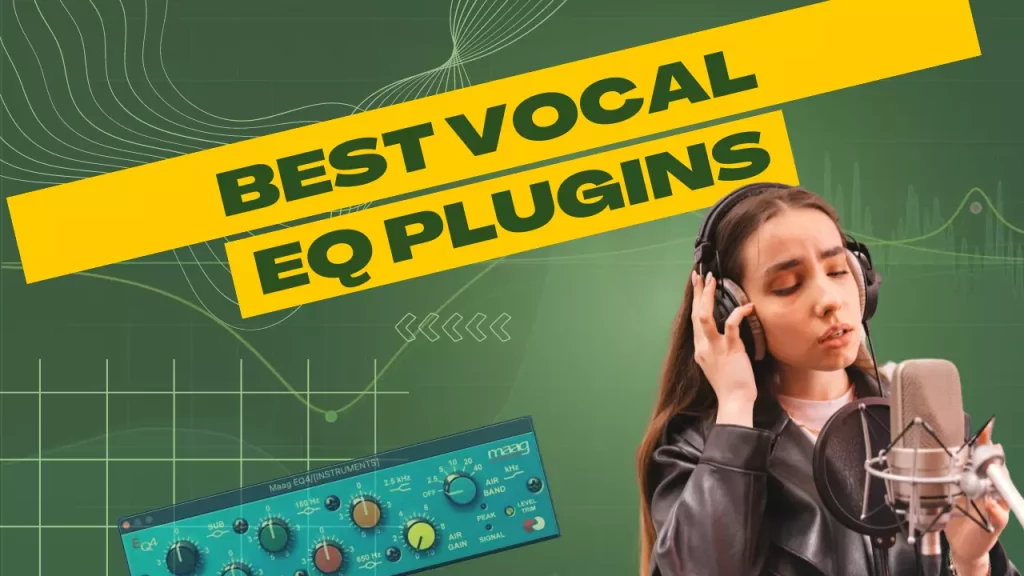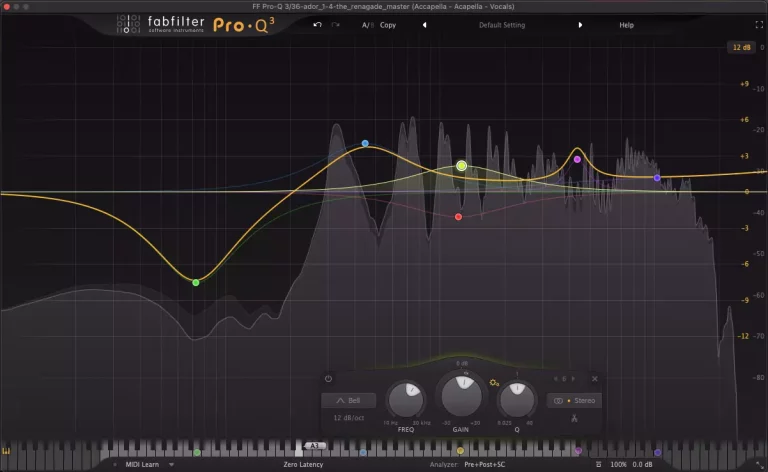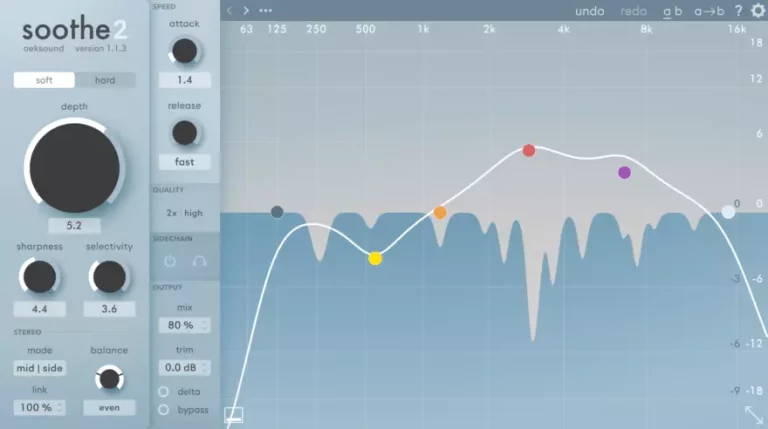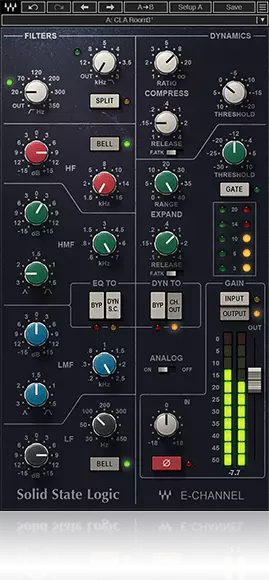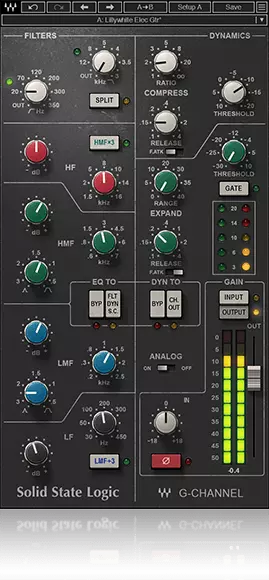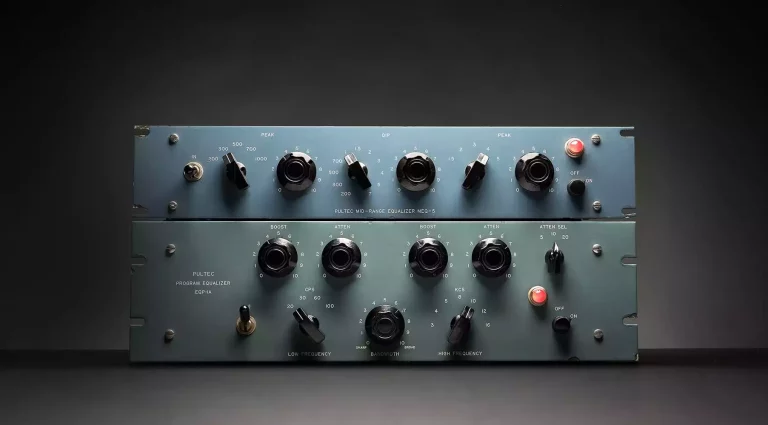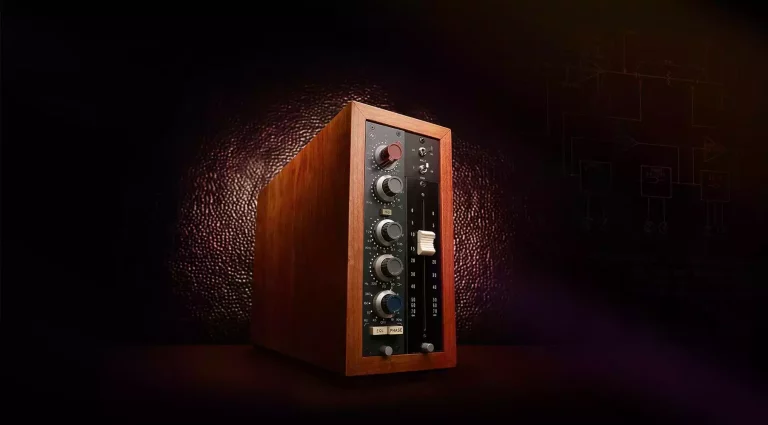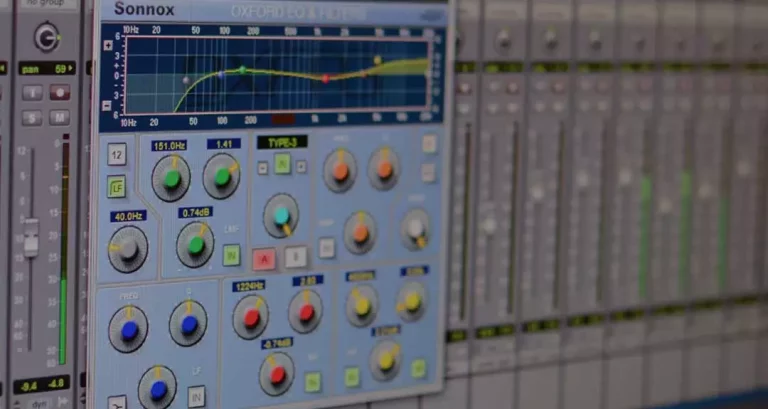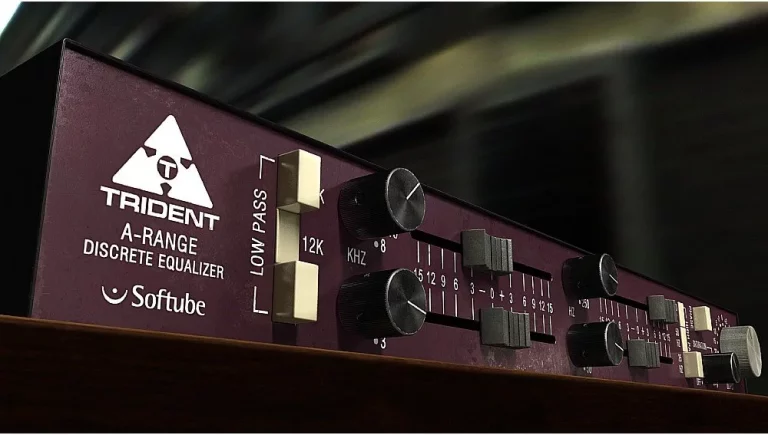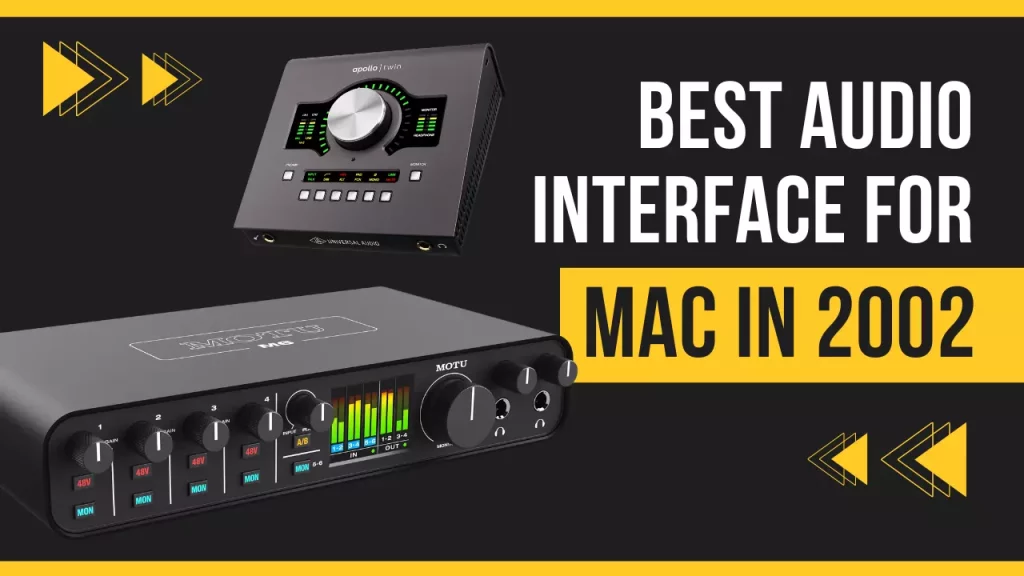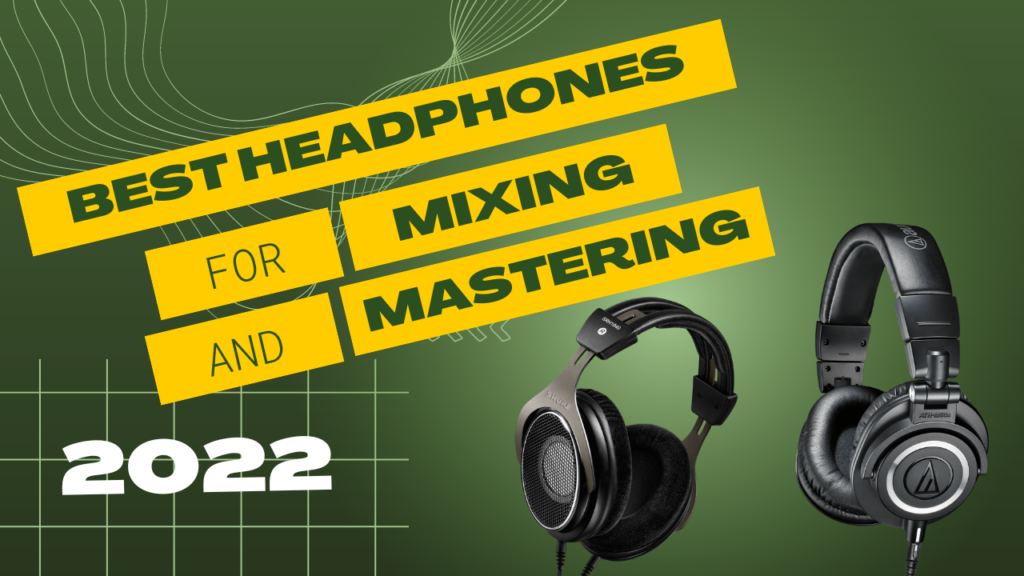Vocals. They sit front and center in your mix, carry the track, and hook your listeners. The ultimate moment many musicians dream of is fans singing along to their song. In some ways a killer vocal sound is the holy grail of music production. Obviously, how you process a vocal matters a lot, so you want the best Vocal EQ possible.
EQing vocals is an art unto itself. They are notoriously tricky to cut without thinning, or boost without muddying. But using the right EQ can tame harshness in your vocals without sacrificing the body. It can define the character of your vocals, and ultimately make them sit much better in the mix.
With that, here is a list of our go to eq plugins to make a vocal performance sound beautiful.
Table of Contents
What is an EQ?
Equalization (EQ) is adjusting the balance between frequency parts (bands) within a signal. Simply put, EQing is controlling what space elements of your track occupy in the frequency spectrum.
EQ let’s you shape the tone of instruments. Some call it “carving” or “sculpting” but it’s all tonal shaping. If you cut or boost frequencies you affect the tonal balance of a signal.
You can also use EQ correctively, cutting unwanted frequencies or harsh frequencies.
The true masters use EQ as a creative tool. Adjusting the frequency content of vocals or other instruments can create wonderful contrast that’s both strange and pleasant to the listener’s ear.
How We Picked the Best
Not all EQs are created equal. Some are general purpose, while others are very specific. One may be better for additive eq, while another is more suited for subtractive eq. Others are extremely simple to use, and other still are best suited for professional mix engineers.
When picking our favorite eq plugins, we considered the features, application, ease of use, and value.
There are thousands of eq plugins on the market. So we highlighted the best tools to eq vocals below.
To put it bluntly. Pro Q3 is pretty much the best EQ to have around, period. If you have only been using in the box EQs to date, drop what you’re doing and buy this right now.
Pro Q is a parametric eq, with up to 24 bands and amazing sound quality. It’s suited to fixing issues with vocals by subtractive EQ. And transparent additive EQ is great for boosts on male and female vocals.
We love the intuitive user interface that makes this EQ a great plugin for all skill levels. It’s highly visual, making it easy to see exactly how you’re shaping your sound. The visual layout greatly speed up workflow, and allow you to get surgical very quickly.
The Spectrum Grab feature is a perfect example. By hovering your mouse at the bottom of the spectrum analyzer, Pro Q will highlight your peaks. You can use this to where to de-ess, or find certain frequencies that may sound too loud in your vocal.
The Dynamic EQ is particularly great for processing vocals. You can set a band to only apply a cut over a specific dB level. This is great for taming problematic frequencies.
Check out this video showing how these features work:
This is a great plugin to process a vocal. The versatile features make it suitable for almost any situation. We can see why Skrillex listed Pro Q as one of the only plugins he can’t live without.
It’s hard to overstate the number of hits use this iconic EQ. The MAAG EQ 4 has versions from UAD and Plugin Alliance. It’s an emulation of a 500-series EQ. It has six bands, 5 of which are static. These move upward by sub, 40 Hz, 160 Hz, 650 Hz, 2.5 kHz, and Air. All have cut and boost.
The air band high shelf can go all the way up to 40 kHz. It’s this amazing high end that the MAAG is known for. It brightens vocals almost instantly, making the higher frequencies pop. It’s the unique defining feature of this plugin. And, it sounds great on electric guitars, too.
Check out this example of it in use:
Because the other bands are static, it’s not the best EQ if you need precision to get surgical. But the effect is so musical and subtle it remains a favorite. It’s very analog feeling, and you can really drive the air band without adding the harsh frequencies you may expect.
It’s a winner on any vocals that may sound dull or a little subdued in the mix. Give your vocals a great pop shine, even if you’re just going to place this last in your vocal chain to add that air.
This is a curveball in that it isn’t really an EQ plugin.
A lot of word-salad has been used to describe exactly what Soothe does. But, succinctly, it is dynamic resonance suppression.
I like to think of Soothe as an automated Swiss Army Knife. It’s part Dynamic EQ, part de-esser, and part multiband compressor all in a single plugin.
Passing your vocals through soothe will reduce mud, resonant frequencies, nasal sound, and overall harshness. It’s a great addition to almost any vocal chain.
If you engineer much hip hop this tool is great to help supporting vocals in the back of the mix, while letting the lead vocals shine through. Rather than a tone sculpting tool, we recommend Soothe to control frequencies that sound harsh and resonant frequencies, without distorting your vocals.
Waves SSL E-Channel & G-Channel EQs: Analog Emulation for the Masses
There are a couple of options from Waves’ SSL that emulate analog EQs. Their E-channel and G-Channel plugins are great tools was to eq vocals without making them sound unnatural. Best of all these fantastic emulations come at a very reasonable price, making them more accessible for bedroom producers than some of comparable UAD offerings.
Many engineers resisted the move to digital plugins specifically so they could continue using the legendary Solid State Logic (SSL) consoles. The analog SSL series has a unique character and distinct sound that for years many claimed just wasn’t being reproduced digitally. But Waves has developed two fantastic emulations. They bring the same streamlined workflow engineers have come to know with the rich analog sound listeners love. Pushing these plugins into overdrive will give you that signature warmth and saturation.
This emulation of the legendary “Black Knob” 242 EQ circuitry delivers classic big-console sound. The design is all-discrete. and it emulates the Class A, VCA chip. This EQ plugin includes a complete channel strip with a four-band semi-parametric EQ. The E-Channel’s a top tool for detailed problem-solving. We love it for rock or metal music.
The G-Channel EQ is a four-band semi-perimetric EQ emulating the SSL G Series EQ 292. The This is a great plugin for additive EQ. The signature pre-boost dip, pre-cut rise, and broad Q for extreme frequency manipulation. The G-Channel adds notable midrange punch that works well with vocals and other elements like guitar. Aggressive, intense vocals that slice through the mix will benefit from a midrange boost from this EQ plugin. The Dynamics section includes both compression and limiting. The automatic makeup gain helps keep output levels constant. The G-Channel is a great plugin to shape and give character to a sound.
The Pultec EQs are legendary for a reason. They add great warmth and shine to any vocal performance, without harshness. The Pultec line provides crisp, clear boosts, without being overly bright. Also, these can emulate that air band from the MAAG with an ultra high boost end on a wide bandwidth.
UAD Pultec MEQ5
Of the Pultec family, this is the best for vocals, specifically. These plugins, like many UAD offerings, emulate what the hardware provides very faithfully.
This plugin is great for really maximizing the midrange of your vocals with an unorthodox overlap of boosting and dipping bands. It gives a vintage vibe by both boosting and cutting the same band to deliver a vibrant tone. The two bands of mid range boost combined with the one band of mid range dip and passive EQ emulation can make your vocals feel alive.
UAD Pultec EQP-1A
This EQ might look limited by digital standards, but it packs a punch in crafting silky smooth vocals. This EQ plugin has is uniquely able to affect the fundamental frequency of a vocal with its low band. It’s best for adding broad clarity to vocals sound, rather than for surgical cuts. Think of it as long, confident brush strokes, painting your sound. With its low end focus, it works great on bass guitar, synth bass, and kick drums, too.
This is a fantastic preamp and EQ combination. It’s a tremendous reproduction of Neve’s original 1970s hardware. The Class-A preamp and EQ mirror the Red Knob dual-stage preamp to give an authentic vintage sound. The curves allow you to inject air with a high shelf similar to the MAAG. And, this features all 10 clipping points from the original preamp and EQ circuitry. This plug stands alone and will give your vocals a distinctive sound with any additive boost.
The Sonnox oxford line are some of our favorite mixing and mastering plugins. This five-band parametric EQ is no exception. It’s a static EQ, so there are no dynamic EQ bands or mid/side processing. But, it produces an ultra-high quality sound with low noise and minimal distortion.
We can see why this EQ is a favorite among mix engineers. The response is transparent and it’s a great way to shape your vocals. It’s modeled after the Sony OXF-R3 console. Great for both surgical applications and tone sculpting. We particularly like this for Best for subtractive work on a vocal. If you’re using this for an additive boost, you’ll be pleasantly surprised at how musical they can sound on a vocal track.
It has little to no noise and less phase distortion than other plugins at this price point. An interesting quirk is the filter only go up to 36dB / Octave. It isn’t a dealbreaker for how versatile this EQ is, but if you’re using high pass filters at 48 dB / Octave be aware.
Another analog emulator plugin rounds out our list. The attention to detail in recreating the original console is impeccable. The saturation from the Softube native version is excellent on vocals. This one is best for rock vocals that need to be aggressive and prevalent. We love the unique UX, using sliders, rather than the knobs you see on almost every other EQ.
Conclusion
So which vocal EQ is right for you? As always, it depends on your needs. If you’re looking for an all around best EQ for any job, you wont go wrong with Fabfilter Pro Q3. Some hardware emulation can be a great touch to add some analog warmth to a vocal sound, especially the Pultec line. And the MAAG is a legendary vocal EQ if only for how it brightens vocal tracks. Ultimately, your approach to mixing vocals the vocal chain you build should be a reflection of what the song requires. As long as you have a well rounded eq to to shape the frequency range, and a surgical tool to tame problem frequencies, you’ll be well on your way.

